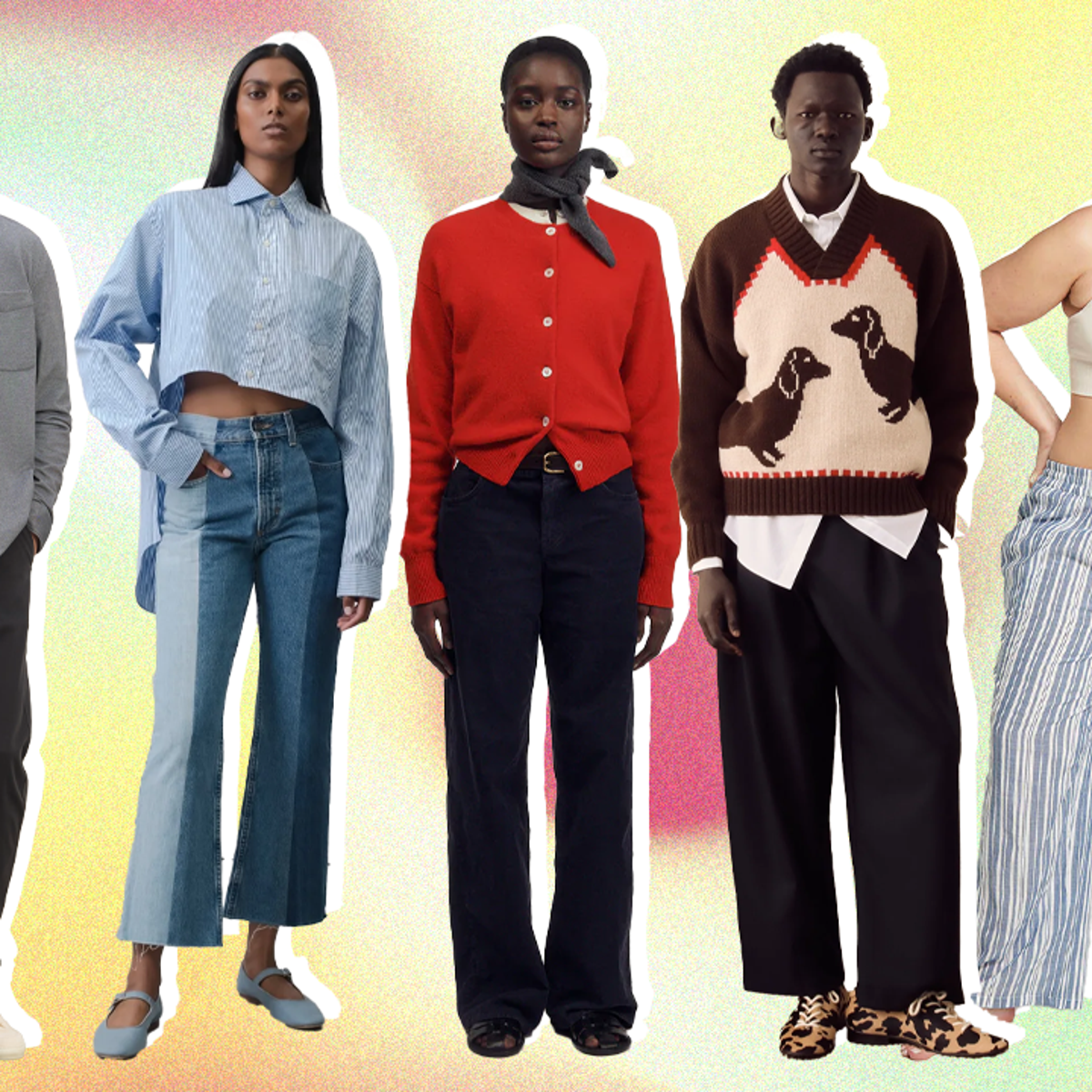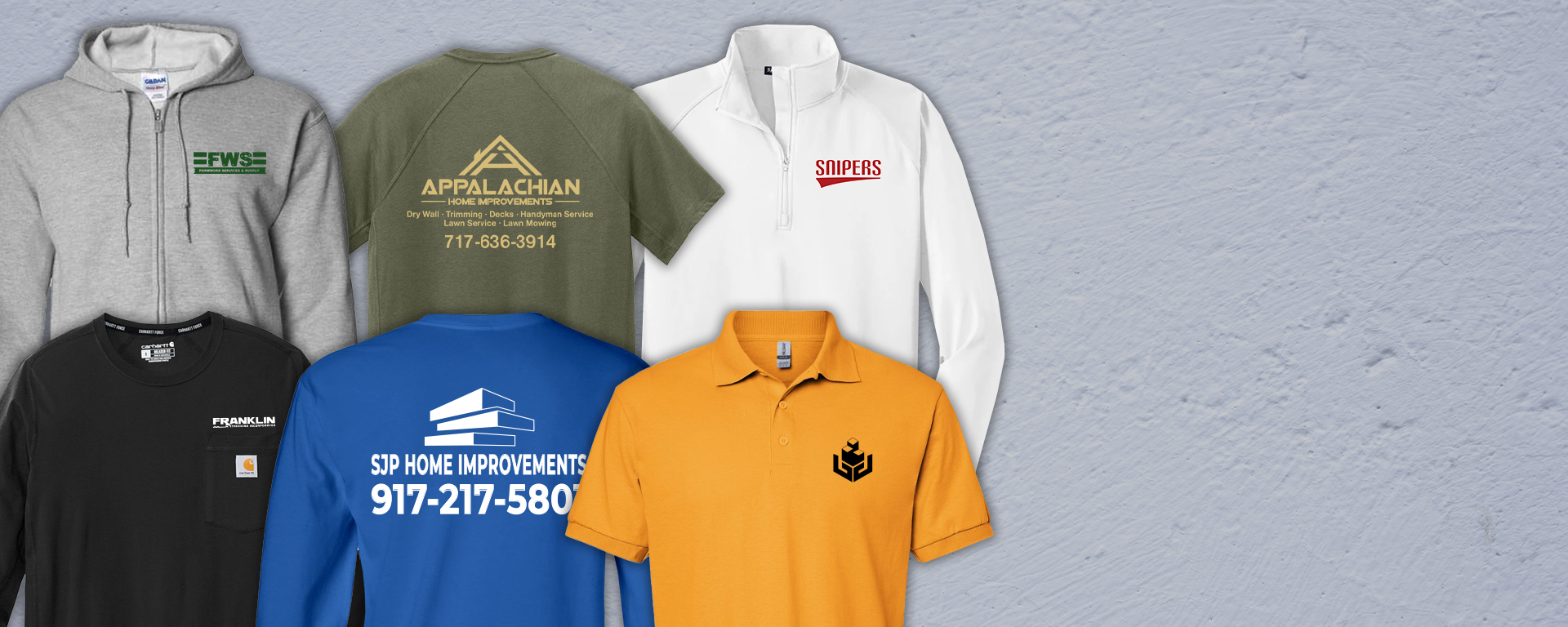Choosing Branded Clothing That Balances Durability and Elegance
Choosing Branded Clothing That Balances Durability and Elegance
Blog Article
Comprehending Apparel: The Relevance of Material Selections in Your Wardrobe
The option of fabric in clothes plays a crucial duty in both aesthetic appeals and functionality. Different materials supply varying levels of durability, breathability, and convenience, directly influencing the wearer's experience. Recognizing these nuances can boost one's wardrobe substantially. Yet, several neglect exactly how these selections can influence not simply individual style, yet likewise sustainability. What fabric decisions could redefine your closet and align it with both design and duty?
The Duty of Textile in Fashion and Functionality

Typical Textile Types and Their Qualities
When picking garments, understanding the characteristics of typical textile kinds is vital for making educated choices. Cotton, a widely-used natural fiber, is understood for its soft qualities, breathability, and versatility, making it suitable for sportswear and daily garments. Linen, one more all-natural option, boasts outstanding moisture-wicking residential or commercial properties and an unique appearance, ideal for cozy climates.Wool, usually preferred for its warmth and sturdiness, differs in fineness; merino woollen is soft against the skin, while coarser types are utilized for outerwear. Synthetic fabrics like polyester and nylon provide longevity and resistance to creases, making them prominent for activewear and traveling garments. Blends, which integrate all-natural and synthetic fibers, can boost functionality while maintaining comfort. By recognizing these fabric characteristics, individuals can select apparel that lines up with their way of living and visual choices.
Breathability and Convenience: Selecting the Right Fabrics for Various Environments
Selecting the appropriate textiles for numerous climates can significantly enhance convenience and total wearability. Breathable products are important in hot climates, as they permit air flow and wetness dissipation. Fabrics such as cotton, bed linen, and moisture-wicking synthetics properly draw sweat far from the body, keeping the user cool and dry. Conversely, in chillier environments, thicker fabrics like woollen or fleece offer insulation while keeping breathability, guaranteeing heat without overheating.Additionally, the option of material weight plays an essential duty; light-weight fabrics are preferable for summer, whereas larger alternatives are fit for wintertime wear. Understanding the special buildings of each material makes it possible for individuals to dress appropriately for differing climate conditions. Inevitably, picking comfy and breathable fabrics tailored to particular environments can substantially improve daily convenience and improve the total experience of wearing apparel.
Durability and Care: Exactly How Material Affects Long Life of Your Wardrobe
Picking the right products can substantially impact the durability and care requirements of a wardrobe. Fabrics such as cotton and polyester are recognized for their resilience and simplicity of maintenance, making them excellent for daily wear. On the other hand, fragile products like silk and shoelace require more cautious handling and specialized cleansing methods, which can boost the time and initiative required for care. Branded Clothing.Durability is likewise affected by the textile's weave and coating; tightly woven fabrics tend to withstand damage better than freely woven choices. In addition, synthetic blends usually give enhanced durability, combining the very best high qualities of multiple fibers.Understanding the care instructions for each and every fabric is vital, as inappropriate cleaning or drying out can result in premature wear. Inevitably, choosing long lasting products can bring about a longer-lasting closet, lowering the frequency of substitutes and contributing to an extra lasting style selection
The Effect of Textile on Fit and Silhouette

Sustainable Fabric Selections: Making Eco-Friendly Choices
The influence of fabric prolongs past fit and shape to include environmental elements, triggering an expanding rate of interest in sustainable material selections. Green materials, such as natural cotton, hemp, and Tencel, are obtaining traction amongst customers that prioritize sustainability in their wardrobes. These products are usually produced with fewer chemicals and water, lowering their environmental footprint.Additionally, recycled textiles, made from post-consumer waste, use an ingenious remedy to the fabric industry's air pollution problem. Brands progressively embrace openness in their sourcing techniques, enabling consumers to make educated choices about their purchases.Choosing sustainable materials not just sustains ethical methods yet likewise motivates the fashion sector to adopt even more liable manufacturing methods. As awareness of environmental issues rises, people are urged to assess the long-lasting impact of their material selections, promoting a movement towards an extra sustainable and ecologically mindful strategy to style.
Boosting Design: Exactly How Fabric Can Change an Attire
While numerous might focus on color and cut when selecting a clothing, the option of textile plays an essential function in raising design and improving overall appearance. Different materials convey distinct state of minds and messages; as an example, silk exudes deluxe and class, while denim provides an informal, kicked back ambiance. The structure and drape of a textile can drastically alter the shape, with organized fabrics offering a sleek appearance and softer ones creating a much more fluid, kicked back aesthetic.Moreover, the weight of the fabric influences wearability across periods. Light-weight textiles like bed linen and cotton are ideal for summer, while heavier materials such as wool and velour give heat and elegance in cooler months. Comprehending textile residential or commercial properties, such as breathability and stretch, also equips individuals to make try this web-site informed choices that boost convenience without jeopardizing design. Eventually, the appropriate textile can change an outfit from average to amazing, making it a vital factor to consider in any type of closet.
Often Asked Questions
How Do I Determine the Fabric Web Content of My Apparel?
To identify material material, one can take a look at treatment labels, conduct burn examinations for fiber recognition, or get in touch with fabric examples. These methods aid distinguish materials, ensuring notified choices for garments treatment and upkeep in daily wear.
Can Fabric Option Affect My State Of Mind or Self-confidence?
Fabric selection can substantially influence a person's mood and confidence. Branded Clothing. Specific materials might stimulate sensations of comfort or beauty, while others can really feel limiting or unflattering, ultimately influencing self-perception and psychological health throughout the day
What Fabrics Are Ideal for Delicate Skin?
For individuals with delicate skin, natural textiles like cotton, linen, and bamboo are often recommended. These materials are breathable, hypoallergenic, and much less likely to trigger irritation, making them appropriate options for convenience and skin health.
Exactly how Do I Effectively Laundry and Care for Different Fabrics?
To effectively clean and care for various textiles, one have to take into consideration each product's details demands, including temperature setups, cleaning agents, and drying methods, making certain long life and keeping the fabric's initial qualities for excellent usage.
Are There Details Fabrics for Athletic or Efficiency Wear?
Athletic or efficiency wear you could try these out frequently uses fabrics such as nylon, spandex, and polyester. These products are created for moisture-wicking, breathability, and flexibility, improving movement and comfort during physical activities while supplying sturdiness and assistance. Conversely, in cooler climates, thicker materials like woollen or fleece give insulation while retaining breathability, ensuring warmth without overheating.Additionally, the choice of fabric weight plays an essential role; light-weight fabrics are more effective for summer, whereas heavier options are fit for winter wear. In comparison, delicate materials like silk and lace need even more mindful handling and specialized cleansing methods, which can raise the time and effort required for care.Durability is likewise influenced by the fabric's weave and finish; snugly woven materials tend to withstand wear and tear far better than loosely woven options. In contrast, stiff fabrics can limit motion yet offer a traditional, sleek look.Moreover, the thickness and appearance of the textile can affect the aesthetic assumption of body shape. The impact of textile extends beyond fit and silhouette to incorporate environmental aspects, motivating a growing interest in sustainable fabric choices. The structure and drape of a material can significantly change the shape, with structured fabrics offering a sleek look and softer ones developing an extra fluid, loosened up aesthetic.Moreover, the weight of the fabric influences wearability across periods.
Report this page